LTSS
Lutheran Theological Southern Seminary, Columbia, South Carolina, 2001-2003.
If you’d rather listen to this essay in a browser or as a podcast, click the audio voiceover (“listen to post”) above. Read this if you need instructions on how to listen to episodes on your podcast app.
If you’re reading this in your inbox, you can find a shareable, web-friendly version at ashleighellskells.substack.com, where all my other essays and podcasts live. You can request to follow me on Facebook here and Instagram here, and I’m happy to hear from you at aellsworthkeller@gmail.com.
A Glimpse of the Backstory
For 113 years, Lutheran Theological Southern Seminary sat on “Seminary Ridge”, the highest point in Columbia, South Carolina, a city not known for high points (good one, Ashleigh!). The school has existed since 1830, moving campuses all over the state for many years, until finally settling, in 1911, on North Main Street in Columbia.
In 2012, LTSS was absorbed by Lenoir-Rhyne University in Hickory, North Carolina in order to share resources and remain sustainable as a school of higher education, with the campus remaining in Columbia. But at the end of 2024, LTSS made the full move to LR, and classes are now taught on the Hickory campus (and online).
The small campus had a variety of oddly matched but impressive buildings, each built in almost completely different eras and in different styles. Beam Hall, the dormitory and first building on campus, constructed of granite and which once housed all classes and offices, as well as the small original chapel. Price House, a stately columned plantation-style house, was the administrative office. The modernist 1970s-era Lineberger Library, full of light and places to sit and study. Voigt and Casey academic buildings, one old, one new, where most of my classes were held. Christ Chapel, the jewel on the crown, was a blend of old and new, with a gorgeous, massive pipe organ, an interior of gleaming white marble, and that iconic stained glass window pictured above.
My favorite Chapel feature was the large, handcarved teakwood cross, hanging above the altar. On one side Jesus and his disciples were painted in color, and on the back, the same scene was left bare, with the glory of the natural wood gleaming through.
I’m grateful the school lives on and is adapting to the changing religious, educational, and worldly climates. In a way, it’s yet another physical move across nearly two centuries of moves. But the place it called home for 113 years will now become something else, something uncertain. Dwelling in uncertainty is difficult, especially when institutions that seemed to be steadfast across our lifetime are surprisingly (or even unsurprisingly) uprooted.
As I mentioned, the campus existed since 1911. That was also the year my grandfather, Reverend Raymond R. Ellsworth, was born. He graduated from the seminary and served as a Lutheran pastor in South Carolina in the ‘30s and ‘40s. The seminary was on the same street as my great-grandfather’s farmhouse where my dad grew up, only a mile away. That house, many years gone, was also where my grandfather died.
Growing up, it had been a special thing to drive by the campus and see those large, white letters–Lutheran Theological Seminary–spread out on the lawn. I knew there was a lot of family history on North Main. There was soon to be plenty of my own story there, too.
How I Ended Up at Seminary, or, “I Didn’t Know You Were So Religious, Ashleigh”
After graduating from college in May 2001, I spent the summer working at camp, and I didn’t really know what I was going to do afterwards. I felt like my options were limited. My life was controlled by my boyfriend’s decisions. He was absolutely certain that he was going to be a pastor (it was a power thing. Narcissists like power wherever they can find it).
We had looked at several graduate programs together, including Gettysburg Seminary in Pennsylvania and Duke Divinity in North Carolina. But he had chosen Yale, a school not only out of reach for me but one I’d never even considered attending.
So I essentially had two choices: either follow him to New England and put my wishes on the back burner, or live at home with my parents and go to Southern. I’d been so used to caving to what he wanted for the past two years that I didn’t even know what my own wishes were at that point. But I was clearheaded enough to know that biding my time at a temporary job in New Haven while he pursued his career wasn’t the direction I wanted to take.
So it made sense to live with my parents and start school at LTSS while we were figuring things out. We’d done long distance before and I wasn’t worried. (Even still, there was never a right answer with him, and he was irritated that I’d chosen to live 800 miles away).
For my own path, I felt caught between two undesirable options. I’d wanted to attend seminary, just not this one. There was nothing more that spelled “failure” than relocating back to my hometown after college. I was desperate to move outside of the Southeast; why would I be drawn back to a place that even had the word “Southern” in its title?!
Perhaps I should explain why I wanted to go to seminary in the first place. I was interested in furthering my education in order to work in a religious field; namely, to work in leadership at one of the many Lutheran camps across the US. At the two camps where I’d worked, Lutheridge and Lutherock, many people, including my supervisors and mentors, were Lutheran pastors. Their humble and effective leadership showed me that this work was something I could do, and do well. And, like me, they weren’t perfect, holier-than-thou people. They helped me see that being a pastor doesn’t mean you have to be squeaky clean.
I loved camp and never wanted summers to end. I couldn’t think of a better vocation than working year-round in a camp setting; it would be rewarding and challenging and so much fun! Plus, with a boyfriend who was going to be a pastor, my skills would complement his if we were to do this work together. I was playful and caring; he was creative and driven. It was a little romantic and a lot naive, and while my reasoning was flawed, I don’t regret for a moment heading back to my old bedroom and to LTSS in Fall 2001.
Three important things happened in the first six months that shaped the rest of my time there:
I realized almost immediately that I didn’t want to be a pastor. I recognized in myself a lack of maturity for such a responsibility (I was merely 22, after all) and saw a future that would have been chosen for me. I could have been sent to a rural church in middle America, all alone, standing up in front of a congregation of older people who thought I was 16 and would try to set me up with their conservative grandsons. I chose the two-year Master of Arts in Religion program and never looked back.
It was a lovely morning on September 11, 2001, when some other students and I walked into Lineberger Library after class, and Debbie at the front desk said, “A plane just crashed into the World Trade Center.” We all just kind of stood there, confused. We decided to go to Beam Dormitory, where there was a common area with a TV, and I sat there with Michelle, Andrew, Stuart, and Mary and we watched in shock as the buildings fell. “They think Osama Bin Laden was behind this,” one of the guys said, and I remember thinking, “Who is that?”
And finally and most significantly for my own life, my relationship blessedly ended midway through that first year. I momentarily mourned the future I had imagined for myself; after all, I had thought that being with this person was part of God’s plan for my life. If I had been wrong about that, how could I trust anything that I thought God was telling me?
But I quickly realized that the end of that relationship removed an enormous weight from my shoulders and my heart. God wouldn’t have wanted me to bear that unnecessarily. And the seminary community gave me the strength to navigate this new chapter much more smoothly than if I’d had to tackle it alone.
Wow, Religious People Can Have Fun, Too
During both of my years at seminary (because it was a two-year program, I got to jump from “First Year” to “Senior” over the summer), I had the privilege of being a part of a community that was becoming more racially and denominationally diverse. Many students were on the AME track (African Methodist Episcopal) and the neighborhood surrounding LTSS had always been primarily African-American; after I graduated, even more effort was made by the school to really be a part of the neighborhood, not just a white spot sitting in the midst of color.
But the primary way that LTSS was diverse was in its heavily multigenerational student body. I wasn’t quite sure how to approach my relationship to some of the people who were known as “second career” seminarians–people who had had a decade or more in some other field before being called to seminary. They had way more life experience and were in a completely different place than I was. I won’t forget a Middler (second-year) who was in her sixties dropping a pointed comment my way that female pastors shouldn’t dye their hair. I squirmed uncomfortably in my seat and was certain that she also did not think that female pastors should have noserings, as I did.
While comments like that were the exception, not the norm, I was still just 22. So it made sense that my social group was a continuation of mostly friends from camp with some new friends folded in. It was exactly the kind of community I was looking for; kind, curious, intelligent, and supportive, with plenty of antics (both irreverent and reverent, ha!) thrown in.
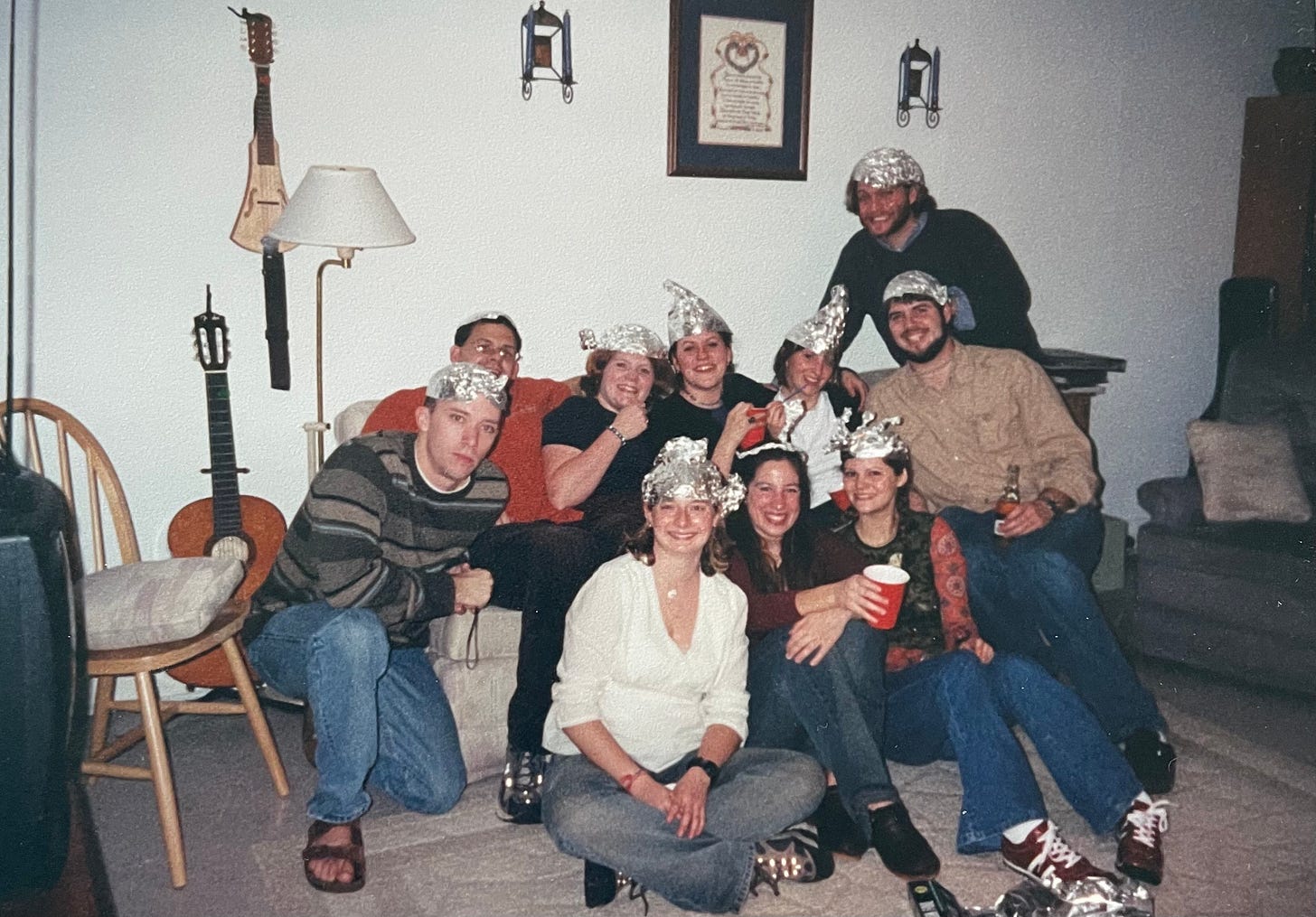
No pictures exist, but by my second year I was a valued player on the LTSS football team. We’d scrimmage every Friday afternoon in the pecan grove. We were a co-ed team, just barely, and it was a lot of fun, and my game definitely improved. Just a few years after I graduated, the LTSS “Fighting Dove” (named after the icon on the stained glass in the chapel) would compete against Gettysburg and Luther Seminaries in the annual “Luther Bowl” for the chance of a championship. It was all in good fun, and I was disappointed I was just a few years too early to be a part of this good natured competition. (This was also the first and last time I was good at football).
I held two small jobs my first year: one, helping my then-88-year-old Grandmother clean up her house. We didn’t get very far, but she gave me a small weekly sum to spend time with her and help her with things, which was a delight.
The other job was caring for the children of another seminarian. They were quintuplets. (Yes, you read that right!). Five four-year-old siblings. Vegan quintuplets. Their mom, my classmate, was understandably overwhelmed. On weekdays, her husband was still working his job in another state, so she was there in Columbia with the kids, juggling her titles of student and single mom. Once or twice a week I would stay with the kids so she could go to class or do homework. It was a wild, wild ride.
The oldest boy of the bunch was an adorable and unpredictable chaos agent of the whole family. There was one day that we were all walking from their house on one side of campus (the street that would be demolished to become Hillcrest Apartments) to the playground at Smith Family Village on the other side, where we’d enjoy our usual vegan pizza (no cheese, just sauce, mushrooms, and olives. I know from my own experience that being vegan is a tough way to live in South Carolina).
We all paused in a gaggle in front of Price House, which I mentioned earlier is this stately old plantation home full of offices. Before I knew what was happening, the oldest boy had taken off all his clothes, tossed them in a pile by the steps, and was running around in the yard. Before I could wrangle any of his four impressionable siblings, at least two more had followed suit (birthday suit)! The sight we made, in full view of Main Street, five little naked children running around a babysitter who could not corral them. Welcome to Southern Seminary!
We’d make that walk across campus often, and the kids had a sense memory of that first time, so there was always a risk that they’d get to that point on campus and start shedding clothes, giggling gleefully as I, by that point, just let it happen. I loved those children but they were gone by the next year. Their mom had decided that she was trying to do too much at once. I hope those now-27-year-olds are doing okay.
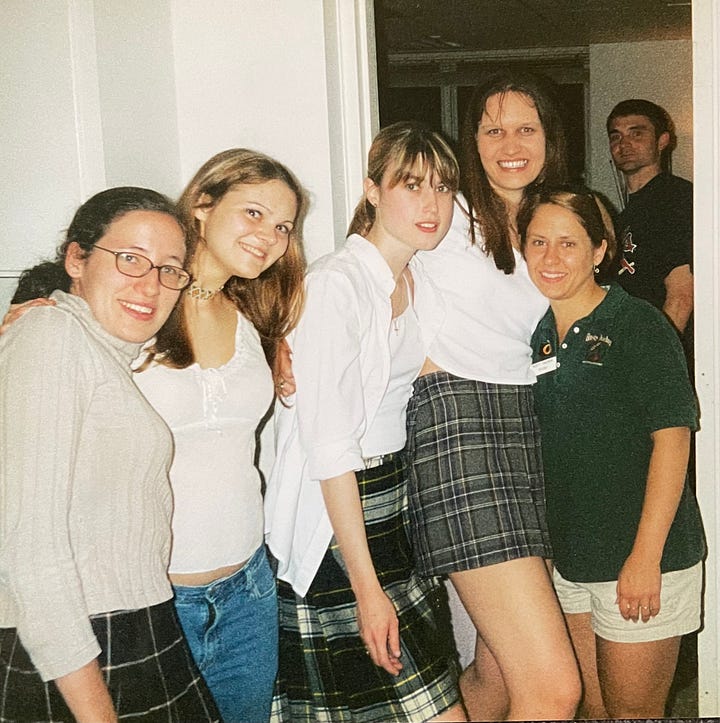
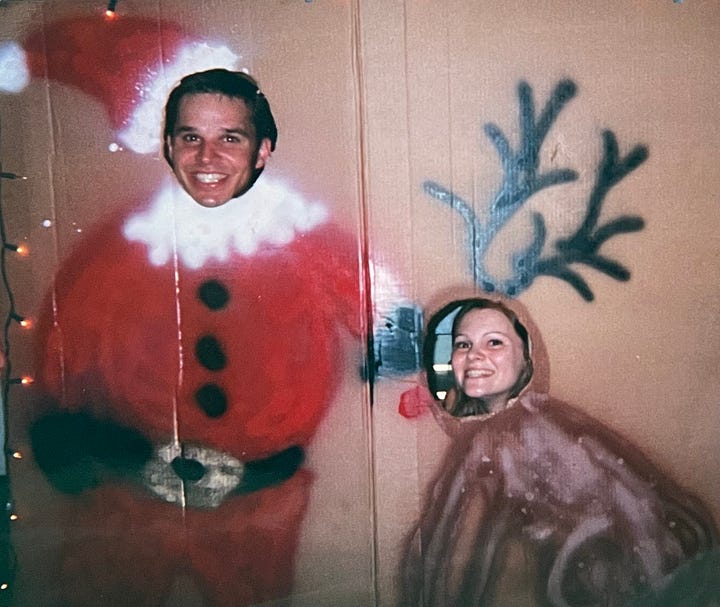
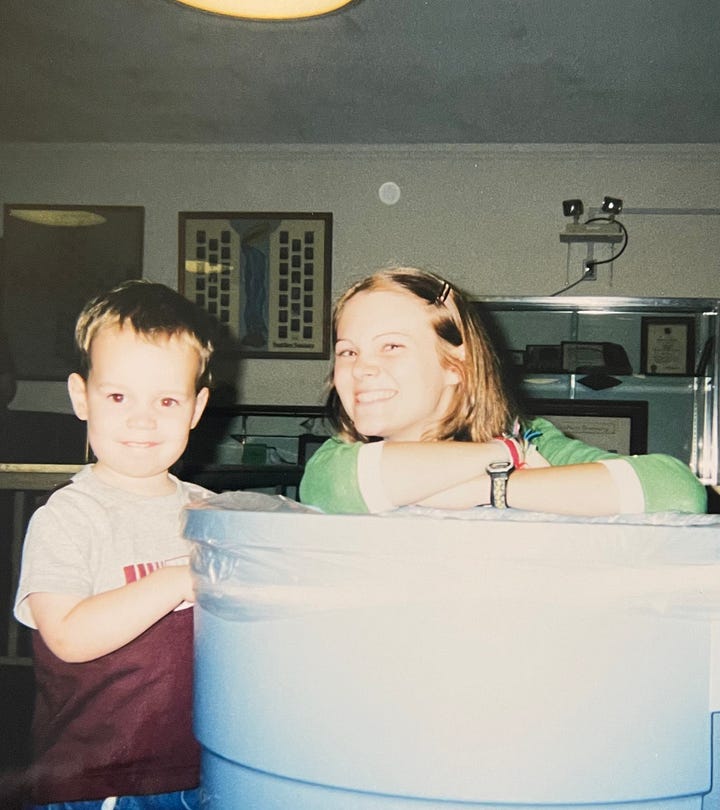
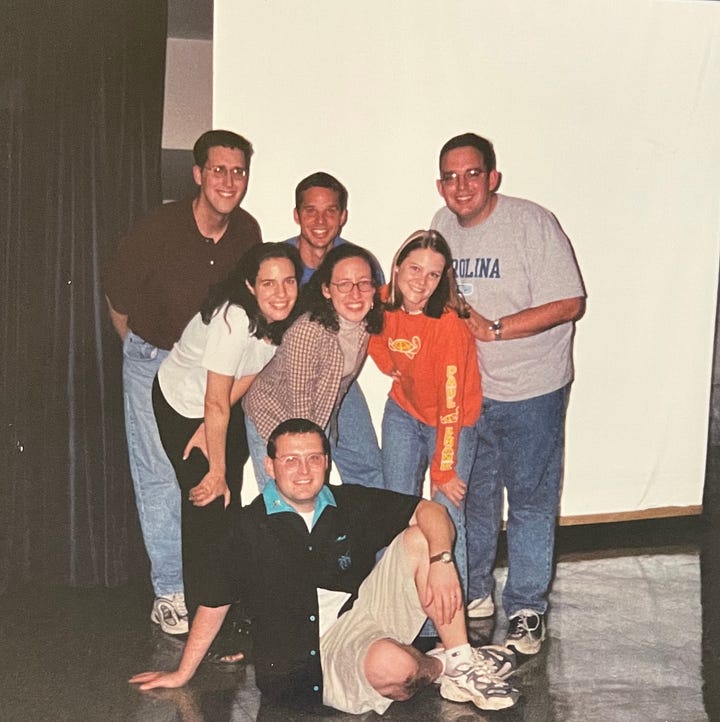
Moving back to my hometown, albeit reluctantly, helped me see it in a whole new light. Columbia is the capital city and also a college town, and I’d taken that for granted as a kid. I didn’t care about Gamecocks and I wasn’t into the university scene, but as a blue county in a red state, we had a lot of advantages that the rest of the state didn’t. The trickle down effect of higher education (and those who value it) gave us museums, the Five Points bar scene, the cheesy but welcome Vista revitalization, and the forthcoming downtown upgrades.
And, for better or worse, don’t forget Hootie and the Blowfish, both a product of this scene and a driving force behind its long term success. (Read more about my opinion about this Columbia band here).
Speaking of musicians, I wouldn’t have been half as entrenched in the Columbia music scene had it not been for those post-college years living there and my friendship with Adam, who was a regular on the open mic circuit and whose bands performed at all the local venues: Lettuce Lounge, Jammin’ Java, New Brookland Tavern, Senate Park. His friends became our friends, and there’s a special place in my heart for the grittiness and perseverance of local musicians who are still giving it a go at the many bars, coffee shops, and small stages scattered throughout the city.
And the physical proximity to some of my high school friends (and one college friend) was a great bonus, too. We got to do a lot of the things that, as young people, we weren’t allowed to do. (Finally)! So, I would revise my original statement to say, if you have the chance to move back home as a young adult (temporarily, remember!), do it. Sure, there’s going to be conflict with your parents, who last remember you as a much younger person who needed a lot more supervision. What better way to get those growing pains out of the way, though? And the biggest benefit is that you might find yourself surrounded by new and old friends, exploring young adulthood together.
Classes and Churchiness
I suppose at some point I should talk about the academic part of seminary, the reason all of us were there. But really, it’s two fold; the difference between a seminary and a divinity school is slim, but the general idea is that divinity school trains students to be academics in the field of religious studies and seminary trains pastors. Now, this isn’t completely accurate–there are plenty of pastors who attended divinity schools and plenty of seminarians who became academics–but at LTSS, worship and faith formation is built into the curriculum.
So it went that about half my classes were more academically-focused (A History of Lutherans in North America, Third World Theology) and the other half vocationally-focused (Pastoral Care, Christian Education for Children and Families). I also chose several electives that were a mix of topics I found interesting, including a study of Monastics and Mystics and a course on Islam and Christianity.
This last class was especially pertinent, since the Iraq war had just begun, and those in power were invoking the stark contrast between the two religions as reason enough for going to war. Learning about Just War Theory and about the essential tenets of Islam showed me that there was far more common ground than difference, and that Muslim people are not to be feared or demonized. This class was an in-real-time reminder of how rhetoric shapes the public’s opinion, for better or for worse.
I learned that I enjoyed learning Hebrew and was decent at it. I also first learned about Ecofeminism while writing my final paper for my Third World Theology class, and found that I wanted to explore it further, which I did in 2008 for another master’s degree thesis.
Chapel was held at 10:00 am daily, and I appreciated the routine of worship, the way it was built into daily life, something I’d come to appreciate as part of the routine of the summer camp day. It was a place to gather and then go on to lunch, either down in the refectory or outside on the quad.
The best night of the year was The Great Easter Vigil. Starting at 10:00 pm on the Saturday before Easter, a packed crowd gathered in the brightly lit chapel to hear lessons and welcome Easter. At midnight, the bells rang, and we all meandered across the street to the president’s house for a reception. I love the tradition of welcoming an important day at midnight the night before, whether it’s Easter, Christmas, or New Year’s…it feels magical and purposeful, and driving home on the quiet, dark streets at 1:00 am, tired but clear-headed, is a great time to reflect on the importance of the day.
I graduated in May 2003 and the ceremony was held at my church, Ebenezer Lutheran. I remember that day and how proud everyone was; my family, my fellow graduates, my friends who still had two years to go. I’d already accepted a job as Director of Faith Formation at a church in Flagstaff, Arizona. I would spend another month and a half at camp before lighting out for the West, where I’d always wanted to live. I was on my way.
WIGIAT? (Where Is God In All This)
Like a lot of my classmates, I mourn the loss of a place that holds so many memories for so many decades. Who will care about the refectory, which had the best broccoli salad? And that lounge area with the pool tables, where I and my soon-to-be boyfriend (short-lived but unforgettably sweet) read poetry to each other in a very public show of flirtation? Who will sit on a pew in the chapel, gazing at the altar, adorned with the words from the Gospel of Matthew, “Come unto me, all…”
To not be able to go back home–in this case, a home within my hometown–can be deeply distressing. Far worse is to go back for a pilgrimage of sorts and find the place altered; buildings torn down or crumbling, vines creeping over, tumbleweeds rolling through. New residents of graffiti and garbage. None of this has happened, but it might. Or to find that the next occupants aren’t caring for the place as it should be. Perhaps a fear is that an uber-conservative religion could buy the campus and turn it into something that we don’t stand for. But that’s out of my hands and in God’s, I suppose.
I understand the rationality of the decision to move the seminary to Lenoir-Rhyne, and am thankful that adaptation prevails over clinging to old, stagnant ways. While there’s a lot that the South can do better, the bonus of being in a place where faith plays a huge role in society is that a school like this can continue to survive and thrive at a time when people are moving on to other things. I know that LTSS will continue to prepare people to go out into the world and serve others in radical hospitality and love, and that’s the most important thing, not the buildings.
There are so many people who accompanied me on my seminary journey. My parents and grandmother, who supported me financially. The faculty and staff at Southern, my classmates, pastors from my home church, and camp, and more. They are all still there, even as the school is not. That part lives in eternity. As my Pastoral Care professor often encouraged us to ask, “Where is God in all this?” Well, God’s still there, too.
I’ve been away from “church work” for many years. Nineteen, to be exact. As Program Director at Lutherwood Camp and Retreat Center, I am back in that world once more. I’m finally at the job I thought I would have when I began at seminary in 2001. I have a strong sense of deja vu, of the clock having stalled and started ticking again. As surreal as it feels, I like it, and I feel at home in my choice of career.
Epilogue
I was already planning to write about my time at LTSS, but when, this January, several leaders in the current U.S. administration publicly slandered Lutheranism, writing about faith feels more rebellious than I would have previously imagined. Due to the sentiments behind these harmful words, thousands and thousands of dollars have been cut to Lutheran-led charitable organizations; these are places where many of my fellow seminary graduates serve (indeed, Global Refuge, where I volunteered during my time at LTSS and wrote about last month, has had to halt a significant amount of its lifesaving work).
One only has to look at the events of January 6, 2021 (lest we forget, several capitol police officers died) and the subsequent pardons of the aggressors to know exactly the kind of “character” our current president and his friends have.
I hadn’t intended for this essay to be political, but frankly I never expected that my denomination would ever be viewed by those in power as “non-Christian” (Lutherans are chill, yo!). Of course, this is coming from the most non-Christian people ever to grace the Oval Office, so the gaslighting is in full force.
We are living in a time of high crisis, and Lutherans are far from the only ones being persecuted. And I am hardly an alarmist person; I save my alarmism for times that truly warrant it. Now is absolutely one of those times.
So, I ask again: where is God in all this?
And I’m afraid that I don’t have a great, prophetical answer to that question right now. I’ve been asking myself the same question since November 8, 2016.
But I do know that God is always in community, and our strength is standing together in love, against the hate that seeks to divide us and crush us. God is there.
Amen.
Reflection Questions
Have you ever made a big decision you weren’t too sure about that ended up being just the right thing? What changed for you?
If you’ve been to Lutheran Theological Southern Seminary, what did you appreciate most about the campus and community?
For student and staff alumni, what will you miss most about LTSS as it once was?
The Columbia campus of the school formerly known as Lutheran Theological Southern Seminary is located in present day Richland County, South Carolina, on the land of the Tsalaguwetiyi (Cherokee, East) and Congaree nations.
Image: Descending dove in the Christ Chapel window, a representation of the church season of Pentecost. Picture from the LTSS Facebook page (apologies to the photographer).



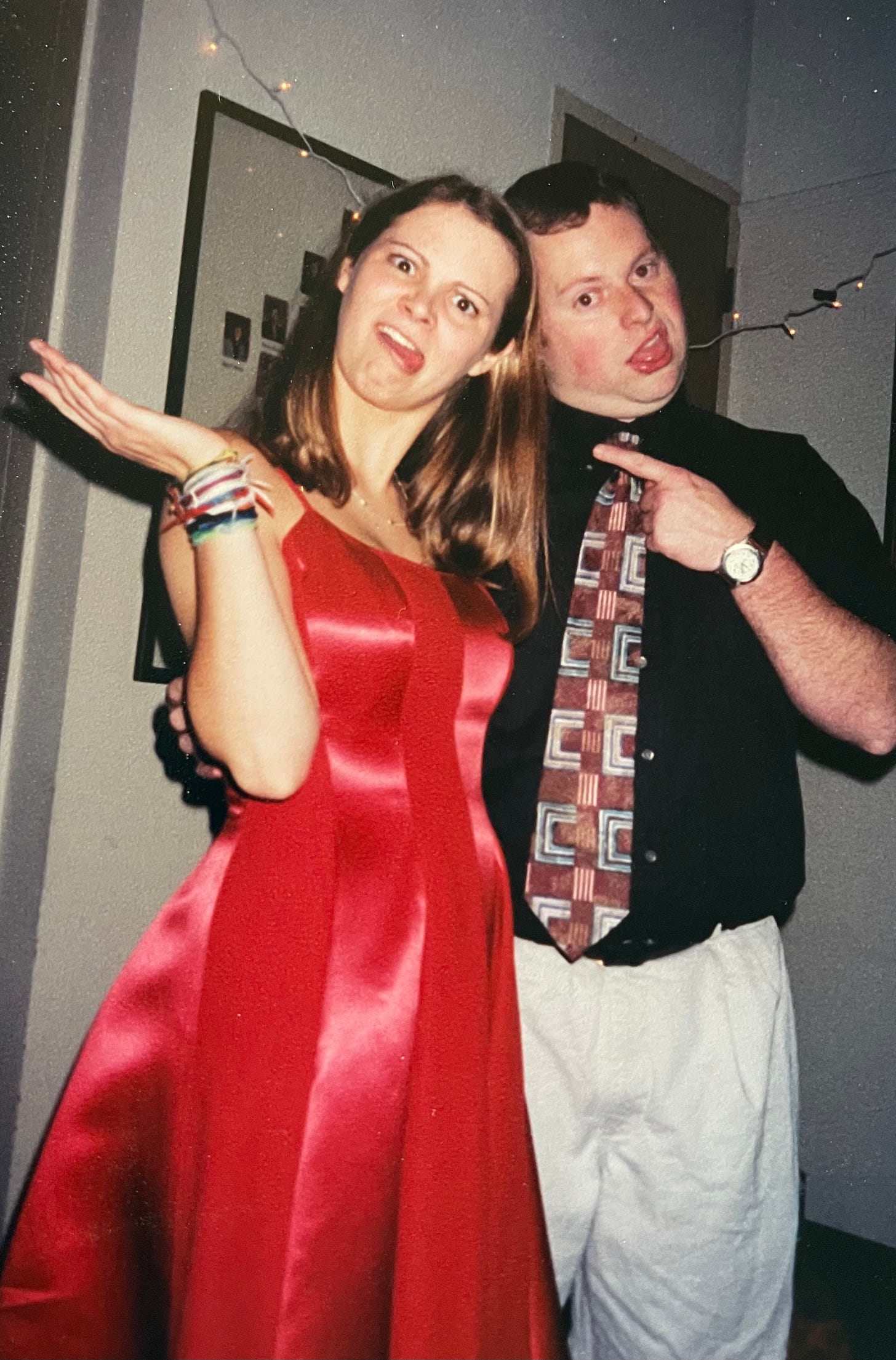
I didn't realize (apologies if I forgot) that we shared a Lutheran heritage. My father went to seminary in St. Louis and later was part of the break from Missouri Synod, ending up in an LCA congregation. In 1989, I was part of the ELCA ordination of two lesbian woman and one gay man in San Francisco. (Huge deal at the time, leading to the expulsion of both churches from the synod.) Truly one of the most moving and memorable experiences of my life.
Just want to say I'm 1) glad that you broke up with the narcissist. Spot on assessment. Perhaps not as common among Lutherans ... but a pulpit can still a stage. 2) Love that you found your way back to the work you felt called to so many years ago. 3) Thank you for making the political connection. We MUST make that connection. Luther himself was basically an activist, speaking truth to power. And while many people are familiar with the "First they came for the... and I did not speak up " quote, few (except our ilk) remember that Martin Niemoller was a Lutheran pastor. Even if the current administration hadn't started slamming Lutherans, we are called to speak up and speak out on behalf of others. It is our moral and spiritual obligation.
Great post!
It was a delight to read every word of this, Ashleigh. Though ours paths crossed at Lutheridge, not LTSS, your words of the latter spoke to my time there as well. I'm glad that a camp setting has made its way back into your life. :)